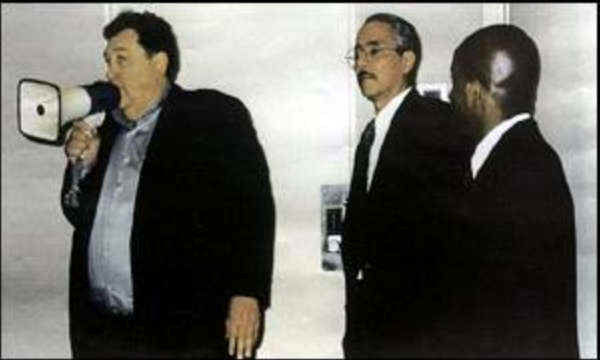Practice Makes Perfect
- Crisis Shield

- Sep 8, 2016
- 3 min read
15 years on, few of us can erase the unbelievable images of New York City's World Trade Centre collapsing on the dreadful day of 11th September, 2001. But how many of us knew that Rick Rescorla, a security employee for major corporate firm Morgan Stanley at the Twin Towers had indeed predicted and raised concerns over a terrorist attack of this very nature, not only once, but twice?

Rick Rescorla saved an unbelievable number of 2,687 people’s lives on September 11. As a jumbo jet plunged into tower one, the Port Authority in charge of the building’s security advised employees in tower two to stay inside. Going against instructions, Rescorla calmly and efficiency ushered out Morgan Stanley employees to evacuate the building as they had practiced multiple times every quarter, resulting in all bar 13 Morgan Stanley staff being evacuated to safety well in advance of emergency warning announcements.
In 1993 The World Trade Centre encountered its first terrorist attack, when a bomb blew up in the building’s basement. As a result of the blast, six people died and more than a thousand were injured. Rescorla had predicted such an event occurring, due to the huge liability over the lack of security and ease of access to the building’s basement. He identified the garage as a weak point but received no official response to his report. As such, a van loaded with explosives was detonated less than ten metres from where he had predicted.
During the terrorist attack in 1993, Rescorla noted how poorly the building evacuation had gone throughout the incident. Following the attack, Rescorla conducted further investigations into this new type of terrorism threat and became the Director of Security for Dean Witter/Morgan Stanley in 1997. During his investigations, Rescorla evaluated the risks to the World Trade Centre and believed that as they had now secured the ground level access to the building, the next attack would be by air.
As such, he made a recommendation for Morgan Stanley to move their corporate headquarters out of the World Trade Centre and into to a less exposed building. However, Morgan Stanley still had three years remaining on their lease and decided to remain.
As a precaution to prepare staff against another attack, Rescorla ensured that every three months all Morgan Stanley employees across 20 floors, including senior executives, practiced evacuating the building in unpredictable full-scaled fire drill exercises. Reports say that top level stock brokers were pulled away from their million dollar trades to practice skipping down 40 flights of stairs two at a time. All the practice paid off on 9/11, saving countless lives.
America Airlines Flight 11 hit tower one at 8:46 a.m on September 11, 2001. As soon as this happened, Rescorla leapt into action and had the majority of Morgan Stanley’s 2,700 employees plus hundreds of visitors safely out of the building before United Airlines Flight 175 struck tower two at 9:02 a.m. That’s approximately 3,000 people evacuated down 40 flights of stairs in 16 minutes.
After effectively evacuating the majority of Morgan Stanley's 2,687 staff, Rescoria went back into the building. When one of his coworkers urged Rescoria himself to also abandon the World Trade Center, Rescorla answered, "As soon as I make sure everyone else is out". He was last seen on level 10, ascending the building, just before tower two crumpled at 9:59 a.m. His body was never recovered.
When was the last time your organisation practiced an unscheduled building evacuation or fire drill, and how long did it take to have all of your employees safely out of the building? Is there a dedicated security manager or chief fire warden pushing people to practice? Are there appropriate emergency warning systems in place to alert employees as soon as possible? Has a security team assessed the risks associated with the level of access to your organisation? Has the board responded fittingly to their findings? It doesn’t have to be a hijacked plane to cause a crisis.
Briggs Communications can help with your organisation’s tactical response to a critical incident by offering staff crisis training and crisis simulation exercises. Practice makes perfect and preparation is paramount.
Rescorla was a brave soldier. Born in Cornwall, Britain, he fought in the Vietnam War and earned a commission as an officer in the U.S. Army. His men called him ‘the best platoon leader they had ever seen.’ He lives on in the memories of many as a hero.
For more information on Rescorla’s incredible bravery, watch The Man Who Predicated 9/11, a documentary made in 2005 by the History Channel, or read Risk Rescorla’s story in “Heart of a Soldier” by James B. Stewart (Simon & Schuster, 2002), or visit his memorial website at http://rickrescorla.com/.





Comments